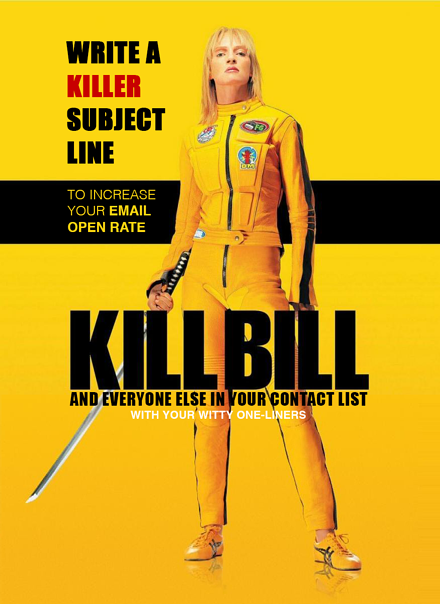A Dummy’s Guide to Writing Marketing Email

In spite of the recent advent of very effective web-centred marketing tools and platforms, marketing email is not as redundant as one would think. It may not be as relevant when it comes to finding and attracting new business, yet it still has a strong role to play in solidifying and nurturing both existing as well as potential clients.
The trick is to get it right, because concise personalised communications remain at the heart of all good business relationships, and to completely forsake this strong communication channel that allows you direct one on one access, would be like throwing the baby out with the bathwater!
Before you start – Ask Permission!
Although, according to statistics, 91 per cent of consumers check their email every day. What they also do every day is delete a vast amount of irrelevant and annoying mails.
Firstly, consumers know when they’re being bulk mailed so buying ready-made email lists, although tempting, is not a good way to go. You do not want your brand to be labelled a pest. Secondly, any email promotion or newsletter sent on a regular basis to a specific email address, including those on business cards, must have permission from the owner or else it qualifies as spam.
Stick to the old truism – If they don’t subscribe voluntarily then they are not interested in your product. Otherwise, here is a to-do list you can follow to maximize your email communications.
Find a Killer Subject Line
The subject line is the gateway, not only to what you have to say, but whether you get to say it at all! If it does not have a hook they will not bite.
Make it as personal as possible
Put your name where you put your pitch! The sender’s name plays an important role in whether your email gets opened . Messages from Sales Departments or ACME Products will not make it past the spam button, even if it is from a company the consumer is familiar with. And, address the conversation to one person at a time. It might be a generic message but your readers must be addressed individually.
Tailor it
In other words, try to send the right content to the right people. Choose your target audience using demographics, market surveys or direct feedback. The Direct Marketing Association found that for the marketers included in their survey, 58% of all generated revenue came from segmented and targeted emails.
Be Clear not Overly Clever
Clarity counts. Keep jargon to a minimum. Keep the tone professional and helpful. Consumers will not seek out what you mean. They do not have the time!
Never mislead
No matter how catchy, funny or relevant, if you do not follow up on the promise you made in the subject line your message will meet a sudden death. An intriguing or catchy subject matter has to deliver the goods.
Numbers carry weight
Statistics attract attention. They draw the eye and carry a degree of authority so use numbers to illustrate your point. But again, make sure they are genuine!
Avoid overused words and phrases
Words like ‘free’, ‘now’, ‘buy’ are so overused they have become instant shut-down keywords. Make the effort to come up with an original topic then focus on the content rather than on clichés. Customers no longer want to be sold something. They want to discover something useful to or relevant to them and will subscribe if it fulfils their needs.
Always address the benefits factor
You might want to talk about a new product or a new process but if you want to catch their attention you have to address what that product or that process can do for them! Highlight the solution or the attraction before mentioning the product. They will follow up anything that addresses their concerns or interests.
Keep it brief

Always assume your audience has little time for interruptions so keep whatever you have to say to a minimum. Three to five paragraphs, bullet points, good spacing and staying on topic is the way to go.
Choose your tone
Friendly but courteous is the best approach. Informative emails do not have to be overly serious. They can be light-hearted, even funny but depending on your audience and your brand, venturing away from the classical approach should be handled with care.
Actions
Emails should also carry calls-to-action and these have to be clear and easy to find. In fact, they are the reason for the email in the first place. Make it easy for your audience to follow up on your advice or your offer. Place your calls-to-action in a central part of the email. Make sure it is well-displayed and if possible, accompanied by attractive images.
Timing
Early morning, according to Kissmetrics, is an optimum time to send your email. Week-ends, seasons, time zones and special occasions are all factors that also affect the optimum time to send marketing email so do your research and follow it as closely as possible. If using a service such as MailChimp or GetResponse, your subscribers will receive your email at their local time, greatly boosting the interest they take in them.
Mobile Users Email
It may sound obvious but do make sure your traffic is mobile friendly. Many people these days do their business on their smart phones and you cannot afford to discount them. Mobile-friendly emails carry all of the above but brevity and relevance become even more important as you have to factor in small screens.
Edit, tweak and tweak again

Aside from the quality of your list, the success of your marketing emails will be dependent on many factors: the sender’s name, the length of the mail, the subject line, and the tone and composition of the email. However things change all the time so nothing is constant. Updating your facts, editing your text and monitoring the response are crucial to staying on top of a successful email marketing strategy. Test your rates of response, factor in a realistic time span, update and refresh your topics, your audience and your presentation and you should be well set up to recoup a decent rate of response.
Warning: Undefined variable $req in /home/sabacons/public_html/wp-content/themes/SabaConsultants/functions.php on line 131
Warning: Undefined variable $commenter in /home/sabacons/public_html/wp-content/themes/SabaConsultants/functions.php on line 132
Warning: Trying to access array offset on value of type null in /home/sabacons/public_html/wp-content/themes/SabaConsultants/functions.php on line 132
Warning: Undefined variable $aria_req in /home/sabacons/public_html/wp-content/themes/SabaConsultants/functions.php on line 132
Warning: Undefined variable $html_req in /home/sabacons/public_html/wp-content/themes/SabaConsultants/functions.php on line 132
Warning: Undefined variable $req in /home/sabacons/public_html/wp-content/themes/SabaConsultants/functions.php on line 133
Warning: Undefined variable $html5 in /home/sabacons/public_html/wp-content/themes/SabaConsultants/functions.php on line 134
Warning: Undefined variable $commenter in /home/sabacons/public_html/wp-content/themes/SabaConsultants/functions.php on line 134
Warning: Trying to access array offset on value of type null in /home/sabacons/public_html/wp-content/themes/SabaConsultants/functions.php on line 134
Warning: Undefined variable $aria_req in /home/sabacons/public_html/wp-content/themes/SabaConsultants/functions.php on line 134
Warning: Undefined variable $html_req in /home/sabacons/public_html/wp-content/themes/SabaConsultants/functions.php on line 134
Warning: Undefined variable $html5 in /home/sabacons/public_html/wp-content/themes/SabaConsultants/functions.php on line 136
Warning: Undefined variable $commenter in /home/sabacons/public_html/wp-content/themes/SabaConsultants/functions.php on line 136
Warning: Trying to access array offset on value of type null in /home/sabacons/public_html/wp-content/themes/SabaConsultants/functions.php on line 136